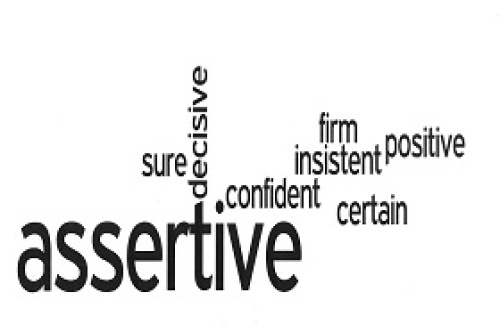If we accept that from the psychological point of view the behavior of humans is determined by the instinctive "fleeing or fighting" syndrome, it is natural to have two extremes, the aggressive side with a real or imaginary enemy, and the passive side trying to escape from a real or a imaginary threat. The concept of behavior includes all forms of communication (verbal and non-verbal) that a person manifests towards one another or the community. So the result of this communication will classify our behavior as aggressive or passive.
Although these behaviors are typical and we meet them in our daily relationships, they do not cease to belong to the two ends of human communication and thus not contribute to the development of healthy interpersonal relationships. Also, these behaviors often lead to a move away from friends, acquaintances, spouse, family etc.
Many times the person who has to choose between the two extremes has consequences, such as to create a sense of threat, and this is not helpful to him/her in making sound and sensible decisions to solve his/her problems.
 It is very important to mention that in human communication there is still some kind of behavior that covers the space between the two extremes, the positive assertive behavior.
It is very important to mention that in human communication there is still some kind of behavior that covers the space between the two extremes, the positive assertive behavior.
A person with aggressive behavior gives the message that he claims his rights exclusively for the ultimate dominance and demonstration of his superiority over others. Also his ultimate goal is the degradation of all other people through hostility, power, threats and attacks. The dominant feeling in the aggressive person is “I win – You lose”.
On the other hand, a person with passive behavior gives the message that he/she no longer has rights over others and also that his/her feelings are not as important as others. This behavior in simple words means retreat, compromise, and inertia. This creates a vicious circle where, as the attack grows, the passive person becomes more dull and passive and the aggressive even tougher and stronger. The dominant feeling in the passive person is “I lose - You win”.
In the case of positive - assertive behavior, the message of respecting the individual towards himself/herself, his/her rights, as well as the rights of others is given. This means that the individual struggles to express his/her needs and beliefs and to claim them, without remaining with the feeling of devaluation that will destroy him/her psychologically. The solution sought is not the demolition of the real or imaginary enemy, but the finding of a mature and functional solution that satisfies both sides. The feeling that works within the positive - contending person is “I win – You win”.
Adopting a positive and assertive behavior has many benefits for an individual, initially because he/she feels very well with the outcome of a debate but also because he/she creates and maintains better relationships with the environment and himself/herself and, also, because the potential for success and achievement of the goal is greater and mainly because it helps the person to say "NO". By better understanding this behavior, it is easier to accept criticism and to treat injustice and criticism in others.
Applying a positive - asertive behavior in the workplace helps to create a healthy environment that has a positive effect on the psychology of human relationships and in this way increases productivity. It also reduces tension and thus helps avoid the diffusion of negative feelings between staff and mainly in personnel-management relationships.
Ultimately, it would be good to say that choosing the kind of behavior we will express in any circumstance may vary and depends on other factors. One of the most important is the personality of each individual as well as to what extent the individual decides what style of behavior he/she chooses to communicate with those around him/her and feel good.

